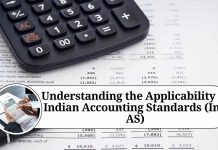Cost accounting plays a vital role in helping businesses effectively manage their financial resources. By analyzing and tracking costs, cost accounting provides valuable insights that enable decision-makers to make informed choices about pricing, production, and overall profitability. In this blog, we will explore the key elements that are typically shown in cost accounting and discuss their significance in driving business success.
- Direct Costs: Direct costs are expenses that can be directly attributed to a specific product, service, or project. These costs include raw materials, direct labor, and any other expenses directly associated with the production process. By tracking direct costs, businesses can determine the actual expenses incurred in producing each unit and make adjustments to optimize profitability.
- Indirect Costs: Unlike direct costs, indirect costs cannot be easily attributed to a specific product or service. These costs are incurred to support the overall operations of a business, such as rent, utilities, and administrative expenses. In cost accounting, indirect costs are allocated or apportioned to products or services based on predefined allocation methods (e.g., activity-based costing). Understanding indirect costs helps businesses determine the true cost of producing goods or providing services.
- Overhead Costs: Overhead costs are a subset of indirect costs that specifically refer to the ongoing expenses required to maintain business operations. These costs include factory rent, utilities, maintenance, and other expenses not directly associated with production but necessary for the overall functioning of the organization. Tracking overhead costs is essential in determining the total cost of production and setting appropriate prices to ensure profitability.
- Variable Costs: Variable costs are expenses that change in proportion to the level of production or sales. These costs fluctuate based on the volume of output or the activity level. Examples of variable costs include raw materials, direct labor, and certain overhead costs directly related to production levels. Understanding variable costs allows businesses to calculate their contribution margin and make informed decisions regarding pricing strategies and production volumes.
- Fixed Costs: Fixed costs, as the name implies, are expenses that remain constant regardless of the level of production or sales. These costs include salaries, rent, insurance, and other expenses that do not vary with changes in activity. Fixed costs are an important consideration when analyzing the breakeven point and determining the minimum level of production needed to cover all fixed expenses. Effective management of fixed costs is crucial in maintaining financial stability and achieving profitability.
- Cost of Goods Sold (COGS): The cost of goods sold represents the direct costs associated with the production of goods or services. It includes the cost of raw materials, direct labor, and other direct expenses incurred in manufacturing or delivering products to customers. COGS is a fundamental measure in cost accounting as it directly affects gross profit and provides valuable insights into the efficiency of production processes.
Conclusion
Cost accounting provides businesses with a comprehensive understanding of their financial landscape. By tracking and analyzing elements such as direct costs, indirect costs, overhead costs, variable costs, fixed costs, and the cost of goods sold, organizations can make informed decisions regarding pricing, production volumes, and overall profitability. A thorough understanding of these elements empowers businesses to optimize their resources, improve operational efficiency, and ultimately achieve financial success.
Other Related Blogs: Section 144B Income Tax Act
Frequently Ask Question
Q1: What is cost accounting?
A1: Cost accounting is a branch of accounting that focuses on analyzing and tracking costs associated with producing goods or providing services. It involves identifying, measuring, recording, and analyzing various costs to provide valuable insights for decision-making and cost control.
Q2: What elements are typically shown in cost accounting?
A2: The elements typically shown in cost accounting include direct costs, indirect costs, overhead costs, variable costs, fixed costs, and the cost of goods sold. These elements help businesses understand and manage their expenses related to production, operations, and overall profitability.
Q3: What are direct costs?
A3: Direct costs are expenses that can be directly attributed to a specific product, service, or project. They include costs such as raw materials, direct labor, and other expenses directly associated with the production process.
Q4: What are indirect costs?
A4: Indirect costs are expenses that cannot be easily traced back to a specific product or service. They are incurred to support overall operations and include costs like rent, utilities, and administrative expenses. Indirect costs are allocated or apportioned to products or services using predetermined methods.
Q5: What are overhead costs?
A5: Overhead costs are a subset of indirect costs and represent ongoing expenses required to maintain business operations. They include costs like rent, utilities, maintenance, and other expenses not directly associated with production but necessary for the organization’s functioning.
Q6: What are variable costs?
A6: Variable costs are expenses that change proportionally with the level of production or sales. They fluctuate based on activity levels and may include costs such as raw materials, direct labor, and certain overhead costs directly related to production.
Q7: What are fixed costs?
A7: Fixed costs are expenses that remain constant regardless of the level of production or sales. They include costs like salaries, rent, insurance, and other expenses that do not vary with changes in activity.
Q8: What is the cost of goods sold (COGS)?
A8: The cost of goods sold represents the direct costs associated with the production of goods or services. It includes the cost of raw materials, direct labor, and other direct expenses incurred in manufacturing or delivering products to customers. COGS is a crucial measure in cost accounting as it directly affects gross profit.
Q9: Why is understanding these elements important in cost accounting?
A9: Understanding these elements is important in cost accounting because it allows businesses to accurately calculate and analyze their costs. This knowledge helps in making informed decisions regarding pricing, production volumes, and overall profitability. It also enables effective cost control and optimization of resources.
Q10: How can businesses benefit from cost accounting?
A10: Cost accounting provides businesses with valuable insights into their financial landscape. It helps identify areas of inefficiency, analyze the profitability of products or services, set appropriate prices, optimize resource allocation, and make informed decisions to enhance overall financial performance and competitiveness.








